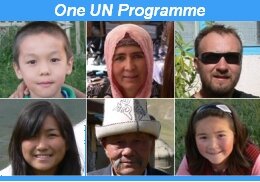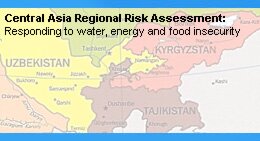| Secretary General’s Message on the World Malaria Day |
|
(24 April 2012) Last year on World Malaria Day, we mourned the fact that one child died every 45 seconds from this disease. This year, we have managed to slow the clock. It remains a monumental tragedy that one child dies every minute from malaria, but we can draw some hope from the many lives saved through international interventions.
More children are sleeping safely under nets, more families are gathering in rooms protected from mosquitoes, more communities have access to testing, and more patients get the medicines they need to recover.
A global coalition has boosted proven strategies, including long-lasting insecticidal nets, indoor spraying, rapid diagnostic tests and anti-malaria medicines for populations at risk.
Thanks to this remarkable partnership bringing together governments, international agencies, donors, researchers, corporations, philanthropists and a range of civil society organizations and concerned individuals.
Their efforts have saved more than a million lives. Since 2000, malaria mortality rates have fallen by more than a quarter globally and by more than a third in Africa.
Now is the time to push for much greater progress. Achieving near zero malaria deaths is one of key priorities in the action agenda I have established for the next five years.
In our world of plenty, there is no excuse for not making smart and affordable investments in malaria interventions. A rapid diagnostic test costs about 50 cents while a course of an anti-malaria drug costs only about $1. A bed net that lasts three years and can protect several children costs approximately $5.
These are modest sums, and we can lower costs even further if we fund research to find better solutions. Even as we seek to prevent malaria deaths today, we must invest in the next generation of anti-malaria tools to fight emerging resistance and continue our drive toward a vaccine. We need to better coordinate our efforts to test, treat and track the disease.
On this World Malaria Day, let us collectively pledge to close the $3.2 billion funding gap to achieve and maintain universal coverage in Africa up to 2015 – and ultimately to reach our goal of defeating this disease.
More children are sleeping safely under nets, more families are gathering in rooms protected from mosquitoes, more communities have access to testing, and more patients get the medicines they need to recover. A global coalition has boosted proven strategies, including long-lasting insecticidal nets, indoor spraying, rapid diagnostic tests and anti-malaria medicines for populations at risk. Thanks to this remarkable partnership bringing together governments, international agencies, donors, researchers, corporations, philanthropists and a range of civil society organizations and concerned individuals. Their efforts have saved more than a million lives. Since 2000, malaria mortality rates have fallen by more than a quarter globally and by more than a third in Africa. Now is the time to push for much greater progress. Achieving near zero malaria deaths is one of key priorities in the action agenda I have established for the next five years. In our world of plenty, there is no excuse for not making smart and affordable investments in malaria interventions. A rapid diagnostic test costs about 50 cents while a course of an anti-malaria drug costs only about $1. A bed net that lasts three years and can protect several children costs approximately $5. These are modest sums, and we can lower costs even further if we fund research to find better solutions. Even as we seek to prevent malaria deaths today, we must invest in the next generation of anti-malaria tools to fight emerging resistance and continue our drive toward a vaccine. We need to better coordinate our efforts to test, treat and track the disease. On this World Malaria Day, let us collectively pledge to close the $3.2 billion funding gap to achieve and maintain universal coverage in Africa up to 2015 – and ultimately to reach our goal of defeating this disease. |








